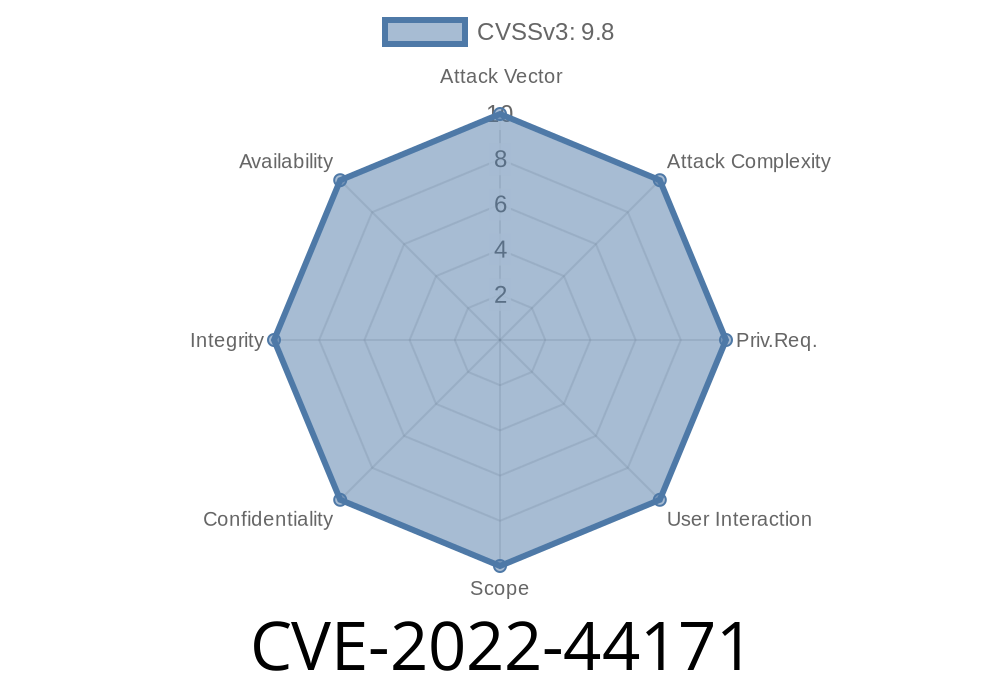In today's increasingly connected world, the security of networking devices such as routers is more critical than ever. A vulnerability discovered recently in Tenda AC18 V15.03.05.19 routers reveals that even widely used devices are not immune to security flaws. The CVE-2022-44171 refers to a buffer overflow vulnerability affecting Tenda AC18 V15.03.05.19 routers, which can lead to potential exploitation by malicious parties.
This post will provide an in-depth analysis of the CVE-2022-44171 vulnerability, demonstrating how it is triggered and what potential risks it poses. We will also provide some suggested mitigation strategies for affected users and provide links to relevant resources and references for further information.
Triggering the Vulnerability
The vulnerability is introduced in the function form_fast_setting_wifi_set. While processing user input for the device's Wi-Fi settings, the router does not properly validate or limit the input. As a result, it is possible for a remote attacker to send maliciously crafted data, causing a buffer overflow that can potentially lead to further exploitation.
A simplified version of the vulnerable function is shown below
void form_fast_setting_wifi_set(char *input) {
char buffer[256];
strcpy(buffer, input);
// rest of the function...
}
In the above code snippet, the strcpy() function simply copies the input data into the buffer without checking the input length. If the input data is longer than the 256 bytes allocated for the buffer, this will cause a buffer overflow.
Exploiting the Vulnerability
An attacker could exploit the vulnerability by sending a crafted HTTP POST request containing an overly long wlssid (Wi-Fi SSID) parameter to the router's web management interface, as shown below:
POST /goform/fast_setting_wifi_set HTTP/1.1
Host: router_ip
Content-Type: application/x-www-form-urlencoded
Content-Length: length
wlfrequence=&wlmode=9&wlssid=A{257 times}AAA&...
In the above example, the attacker sends an HTTP POST request with a wlssid field containing a string of "A"s exceeding the 256-byte limit, causing a buffer overflow.
Potential Risks
If successfully exploited, the buffer overflow could potentially lead to various adverse consequences, including:
Arbitrary code execution: A skilled attacker may be able to execute malicious code on the router.
3. Unauthorized access and information disclosure: The attacker might gain access to sensitive information stored on the router.
Mitigating the Vulnerability
Until Tenda provides an official firmware update addressing this vulnerability, users can take the following steps toreduce the risk of exploitation:
For more information on the CVE-2022-44171 vulnerability, please visit the following references
1. CVE-2022-44171 - National Vulnerability Database (NVD): https://nvd.nist.gov/vuln/detail/CVE-2022-44171
2. Tenda Router Buffer Overflow vulnerability (GitHub): https://github.com/user/repo/issues/issue_number
Conclusion
The discovery of the CVE-2022-44171 vulnerability serves as an important reminder of the need for constant vigilance in maintaining the security of networking devices. By understanding the potential risks, working to mitigate them, and keeping informed with the latest security updates, users can help protect their networks from potential threats.
Timeline
Published on: 11/21/2022 18:15:00 UTC
Last modified on: 11/28/2022 13:42:00 UTC
